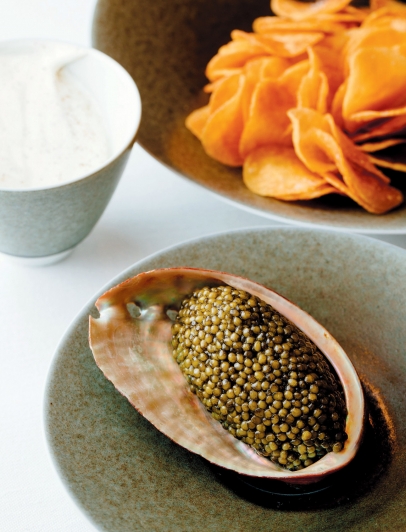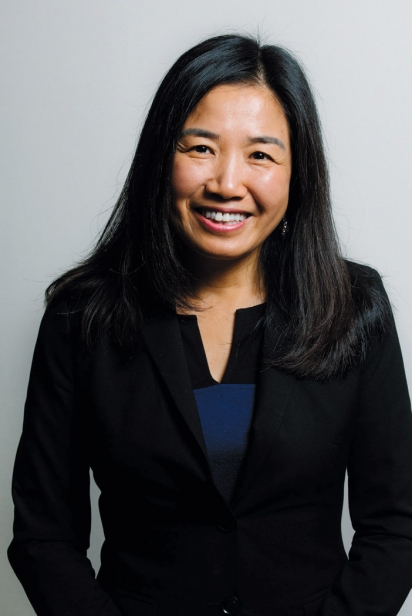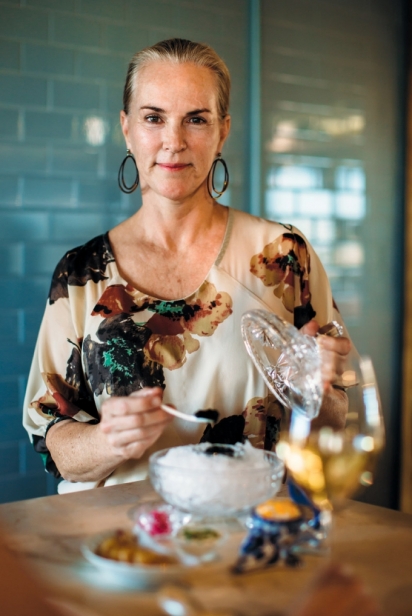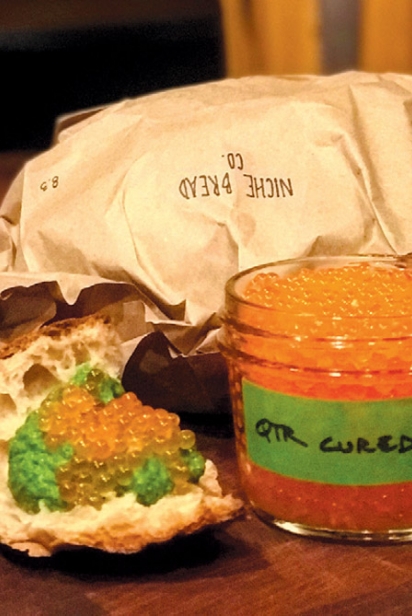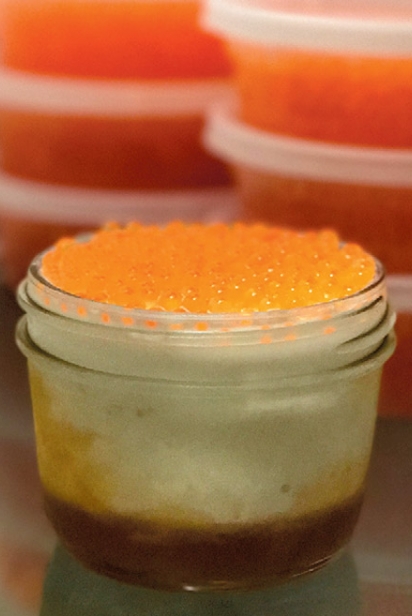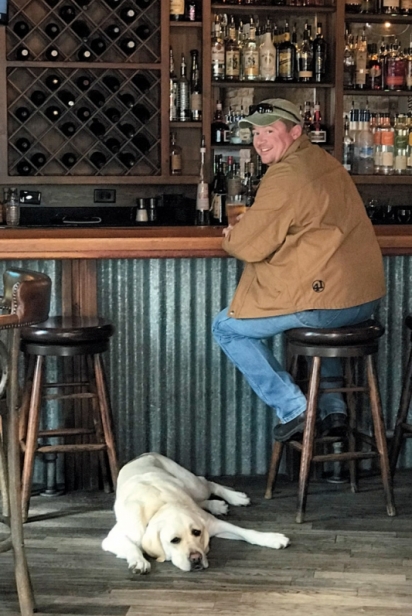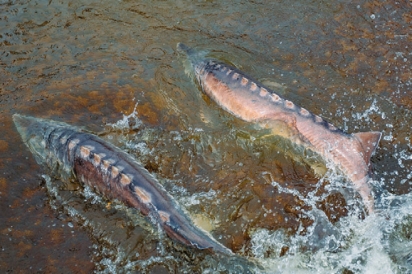California Caviar
FROM (FISH) FARM TO MICHELIN-STARRED TABLES, THE GOLDEN STATE IS AT THE FOREFRONT OF MODERNIZING THIS DELICACY
Shaoching Bishop didn’t have her first taste of caviar until she was middle-aged. It left such little impression on her that she barely remembers the experience, she laughs. Even now, she goads her friends to bypass this luxe delicacy because of its stratospheric price tag.
So it may come as some surprise that Bishop is one of the foremost authorities on farmed caviar, and a mover and shaker in the business. After stints as CEO of two California-based farmed caviar companies—Sterling Caviar and Tsar Nicoulai Caviar—in 2017 she teamed up with no less than Chef Thomas Keller to launch the boutique Napa-based caviar company Regiis Ova, which now supplies all of the Michelin-three-star chef’s establishments, along with other celebrated restaurants around the world.
It was a circuitous path that led the writer and musician from her native Shanghai to California, where she needed to master English before embarking on a successful career as an investment analyst that eventually led to her development as a caviar connoisseur. To this self-professed Berkeley bohemian and nerd, though, caviar will always be just fish eggs. Albeit ultra-prized ones.
“I love caviar. But it’s the business of caviar that I really love,” says Bishop. “I have probably sold more caviar than anyone in the world. It’s because I’m knowledgeable. You can ask me any question about caviar and I can answer it. Most cannot. I just like business. For me, it’s all about the challenge.”
Bishop is part of a new generation of farmed caviar producers in Northern California who are leaving their imprint on an industry that dates to 1988. That’s when Sacramento County’s Sterling Caviar became the first farm in the United States to successfully raise the prehistoric, notoriously slow-maturing white sturgeon whose roe is salted, cured and transformed into caviar. There are now more than 2,300 commercial sturgeon farms globally, according to the Journal of Applied Ichthyology. The appetite for the tiny eggs that pop in the mouth with a profusion of buttery, briny and mineral flavors has not abated, even at upwards of $90 for half an ounce for rarer varieties. In fact, the worldwide market for caviar is expected to grow 5.8% over the next five years, from $360 million in 2019 to $500 million in 2024, according to Analytical Research Cognizance, a statistical data research company.
California’s Central Valley became ground zero for farmed caviar production following the breakup of the Soviet Union. Before that, the harvesting and production of caviar from wild sturgeon, including the most highly coveted beluga in the Caspian Sea, was strictly controlled. But after the breakup, efforts to police the fishing grounds fell by the wayside and black markets proliferated for the eggs. As the sturgeon population became so decimated that many species neared extinction, the United States moved to ban imports of Russian wild beluga caviar in 2006. A few years later, it did the same with Iranian wild caviar.
To fill the void of wild caviar, the Central Valley, long the state’s premier agricultural area, turned its attention to farming of a different sort. Serge Doroshov, a leading fish biologist, was teaching at the University of California at Davis after having defected from the Soviet Union when he figured out how to breed sturgeon in captivity so that they grew twice as fast and matured roughly in half the time as in the wild. That pioneering science led to the establishment of Stolt Sea Farm in 1988, renamed Sterling in 2006, and now the largest farmed caviar producer in North America.
TASTING CAVIAR IN SAUSALITO
In the same way that legendary restaurant Chez Panisse has been and remains a training ground for legions of chefs who go on to leave their mark in the culinary world, Sterling spawned the growth of more caviar farms in California. In fact, Stolt’s original owners later founded Tsar Nicoulai, which also established a sturgeon farm in the Sacramento Valley.
Like that of Regiis Ova’s Bishop, Deborah Keane’s path to vice president of sales and marketing and part owner of Tsar Nicoulai to bona fide caviar trailblazer was unconventional. The former neo-natal nurse, who had also worked in publishing and as an assistant to a chef in Paris, happened to meet a Tsar Nicoulai investor at a posh San Francisco party, who immediately recognized her potential.
“I have a palate for seafood,” she says. “I can’t taste smoke or other flavors in wine, but I can in caviar. I have a palate that can tell wild from farmed, and from which farm.”
After tripling sales at Tsar Nicoulai, Keane eventually struck out on her own, starting California Caviar Company in 2007. Her first client? World-renowned chef Jacques Pepin, who asked her to make the first pressed caviar in the United States. This traditional product, which sturgeon fishermen used to slap on slices of bread for a snack, is made from the broken fish eggs, which get pressed to extract water and oil to form a paste. Sticky and as black as shoe polish, this more affordable form of caviar, which also has a much longer shelf life (three months in the refrigerator), is also quite versatile. It can be sliced like pâté, frozen and shaved over pasta or omelets, or layered between slices of brioche for the world’s best grilled cheese (Keane’s favorite way).
Since then, she’s also worked with such Michelin-starred chefs as Peter Armellino of the Plumed Horse in Saratoga, Dominique Crenn of Atelier Crenn in San Francisco and Matt Accarrino of SPQR in San Francisco, to make their own private-label caviar from start to finish.
In 2014, Keane’s company became the first in the United States to import no-kill caviar. Normally, a female sturgeon is killed to extract her eggs. Keane partnered with a German institute, where a leading marine biologist had developed a process in which the sturgeon’s belly is massaged to naturally release the eggs. The method is more labor-intensive, but can be performed on the same fish every two years. Keane sold the no-kill caviar for a year until the German institute stopped exporting the product. She is now working with the U.S. Food and Drug Administration in hopes of getting the method approved here in 2020. Keane bought the master patent for the institute’s no-kill process, meaning that no other sturgeon farms in this country can use this process without her consent.
When Keane acquired her own caviar farm in 2018, she became the first female caviar farm owner in the country.
At the time of our interview, Keane was awaiting final permitting to open the only caviar tasting room of its kind in the Bay Area, downstairs from her offices in Sausalito, in the space that formerly accommodated retail sales of her products. The Tasting Room by California Caviar features food by Chef Nate Tauer, a veteran of the Daniel Patterson Group, Petit Crenn in San Francisco and Bird Dog in Palo Alto. Patrons will be able to taste up to six different caviar and roe options, all paired with traditional accompaniments including blinis, crème fraîche, hen eggs and pickled red onion. The offerings will also include small plates available a la carte or in a six-course tasting menu. The team also plans to host guest chef and private dinners in the space, and is available for off -site catering.
“I want it to be very approachable,” Keane says, “so that anyone can walk in and try caviar at any price point.”
BACK AT THE RANCH
Michael Passmore possesses a whopper of a fish tale. It’s not about the one that got away, but of how this scrappy former Marine from Texas built a sustainable boutique fish farm in Sacramento County so revered that it now supplies fish and caviar to some of the nation’s most distinguished chefs, and wins kudos from environmentalists for its practices.
“I’m a terrible fisherman,” he quips. “I joke now that’s why I did this— because now I know exactly where the fish are and I just go get them.”
Passmore was studying to be a lawyer when he decided to build a freshwater fish farm on his property in 2005, after growing increasingly intrigued by his neighbor’s success with a similar farm.
Passmore Ranch’s beginnings were anything but easy. The 86 acres on the edge of the Sierra foothills in Sacramento County were barren, with no structures, no electricity and no water. For 10 years, Passmore and his wife lived in an RV on the property, while he cleared 300,000 cubic yards of soil to create a series of confined ponds and land-locked tanks to farm sturgeon, catfish and carp without the risk of escape. No bank would loan him money for such a risky venture, especially when he had no farming experience, so he funded it almost entirely himself.
At first, he peddled live fish at the Sacramento and San Francisco Ferry Plaza farmers’ markets and delivered to an occasional restaurant, often filleting the fish on the spot, himself, because too many cooks had no idea what to do. After a chef friend suggested he target the most accomplished restaurants, whose chefs would appreciate the quality of his products, he heeded that advice and never looked back.
His fish are raised largely on a plant-based diet rather than unsustainable fish meal. The water they’re raised in is used up to seven times to utilize each drop as much as possible. The fish have been served at such well-regarded establishments as Alex Guarnaschelli’s Butter in Manhattan and Mulvaney’s B&L in Sacramento. Additionally, Passmore Ranch’s caviar, harvested and produced on-site, has been a favorite of Michelin-two-starred Acquerello in San Francisco and Michelin-three-starred SingleThread in Healdsburg.
While restaurants continue to be his primary focus, Passmore is now turning more of his attention to home cooks. Passmore Ranch offers their caviar for sale direct to consumers through their website, and they recently began a Caviar Club. Much like a wine club, its members receive regular shipments of caviar, priced at $250 to $1,500 per month.
When he considers how this once-daring venture has gone from uncertainty to success, Passmore still has to blink twice. “I get a huge sense of pride from it,” he says. “It means I’m doing my job.”
ROYAL EGGS
Bishop was a Goldman Sachs investment analyst when a Tsar Nicoulai investor lured her away to turn around that troubled caviar company, which had sustained millions of dollars in losses for a decade. She made it profitable in 16 months. Next, she shored up finances at Sterling Caviar, before being poached by Keller to start Regiis Ovis.
Named for the Latin phrase for “royal egg,” Regiis Ovis was initially designed to supply just Keller’s restaurants. But as word spread, other chefs wanted in. Before long, it grew into a full-fledged business serving around 30 other top restaurants, mostly in the United States, but also abroad. Although Bishop declined to reveal their names, she did confirm that the caviar is being served at Ensue, the opulent restaurant opened this summer in China by Chef Christopher Kostow of the Michelin-three-starred Restaurant at Meadowood. In November 2018, Regiis Ova began selling its caviars online to the public, as well, including packaging in bespoke leather gift boxes complete with mother-of-pearl spoon and a caviar tin opener.
Regiis Ova doesn’t have its own sturgeon farm. Instead, after scouring the globe, Bishop says, they honed in on three farms from which to source: her former company, Sterling Caviar; Kaluga Queen in China; and Polanco Caviar in Uruguay. Other caviar dealers may buy different grades of eggs to offer purchasers a range of price points. Bishop, however, procures only the highest grade from each farm, and only lowers the grade and price if the entire 3½-pound tin’s contents are not sold quickly.
“Some chefs like more umami flavor or butteriness in their caviar,” she says. “Some like a golden color, some like a dark color, and some like very firm beads. We judge on size, color, flavor and texture. Every chef has a different combination. My number one priority is consistency. Because only when you are consistent can you talk about quality.”
While Bishop never eats caviar at home—her family are not big fans of it—she tastes it every day at work, discerning if genetics, handling or temperature have affected it even the slightest bit. She might never have envisioned trading her power suits for well-worn jeans and work boots in which to trudge around fish farms, but she’s found a kinship in this profession.
“I love chefs. They have the same mentality as investment bankers,” she says. “It’s whatever it takes to get it done.”


